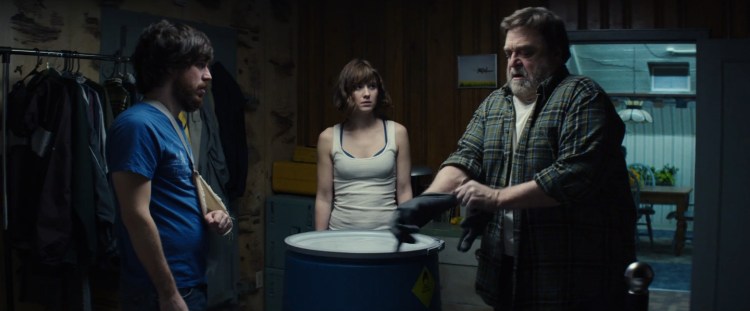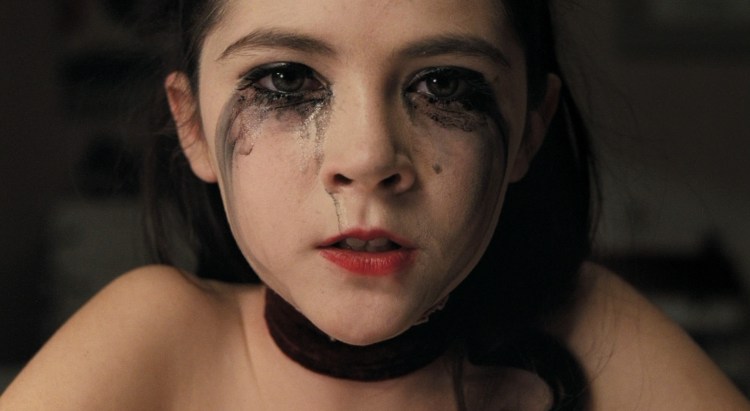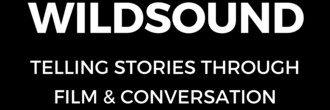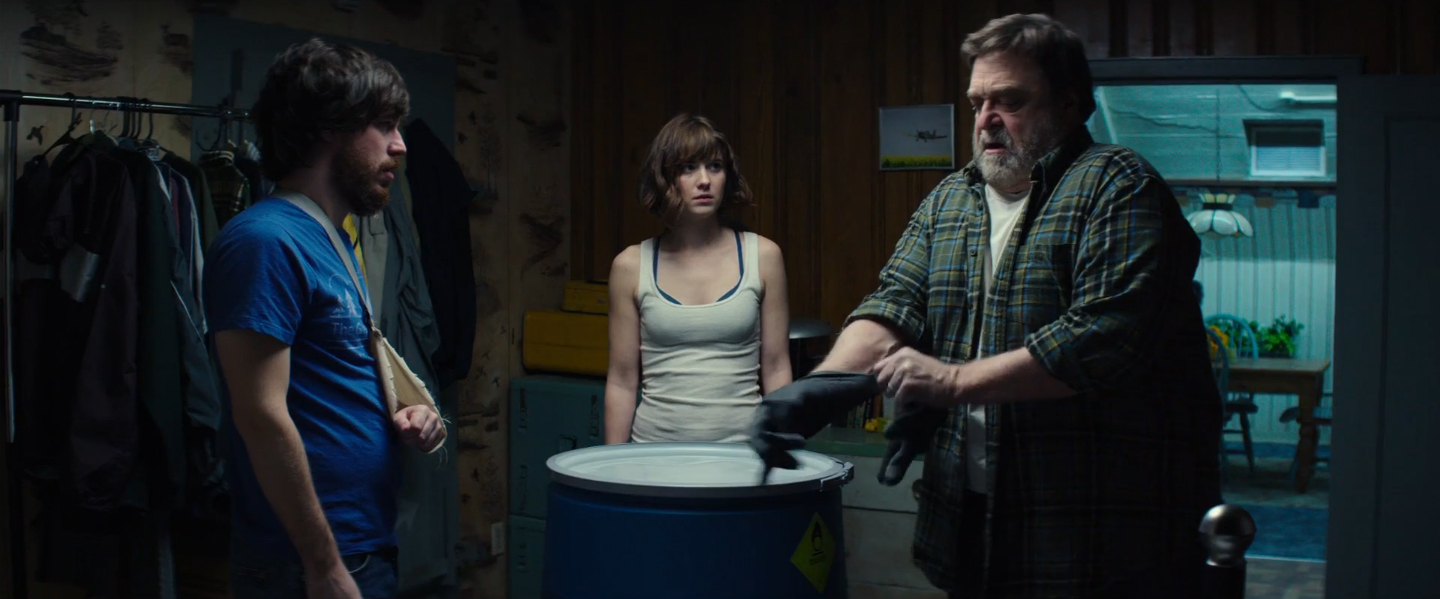Chatting with Jeff Cutter about Cinematography and his career could have lasted all day. I generally like to limit the questions to about 10-15 when I do these film interviews because these are very busy people and generally less is more. With Jeff, I literally could have asked him 100s of questions as we were just scratching the surface. This is one of my favorite interviews to date. A must read for anyone working or wanting to work in the industry.
Jeff’s cinematography credits include “Gridiron Gang”, “Catch .44”, “Yellow”, “A Nightmare on Elm Street”, “Playing It Cool”, and “10 Cloverfield Lane”
Matthew Toffolo: “10 Cloverfield Lane” is set to hit the theatres this week. Can you give us a sneak peak as to what to expect? How was your experience working on the film?
Jeff Cutter: Expect a taut, tense psychological thriller with 1 or 2 big surprises. I had a great time working on the film as we had a wonderful director in Dan Trachtenberg and an extremely supportive production company in Bad Robot. It was a relatively small budget, and had challenges as a result, but since it is mostly a very contained script we could maximize the resources we had.
Matthew: Do you have a favorite experience in your work as a Director of Photography? What film are you most proud of?
Jeff: I am most proud of my latest film, 10 Cloverfield Lane, because the photography is very close to what I had hoped we could achieve, and in some scenes, better than I hoped. My favorite experience was receiving an email from JJ Abrams about 2 weeks into principal photography, telling me how great he thought everything looked.
PHOTO: Still Shot from 10 Cloverfield Lane. Starring: John Goodman, Mary Elizabeth Winstead, John Gallagher Jr.. Director: Dan Trachtenberg

Matthew: You have DP’d many music videos. Is this something that you’ll continue to do? Do music videos give you a lot more creative freedom to explore being it’s generally an experimental type of story being told?
Jeff: I haven’t shot a music video for almost 10 years now, which makes me feel very old! Budgets have shrunk dramatically from the heyday of music videos when I started. Back in the late 90’s and early 00’s, music videos gave you so much freedom to explore, but also the funds with which to do it. So almost any crazy idea a director came up with, you could go and do. Traditional narrative tools, like lighting continuity, or realistic lighting sources, get thrown out the window. But creative freedom doesn’t always lead to good work.
Experimenting will inevitably also lead to some very bad work as well!
Matthew: What is the key difference when working on a horror film (Orphan, Nightmare/Elm Street) in comparison to doing a straight up drama (Yellow)?
Jeff: When working on a horror film, it needs to be, first and foremost, scary. So much of the camera work and lighting is dedicated to creating/enhancing the suspense and scares. When filming a drama, you use the camera and lighting to support the narrative story.
Matthew: “Orphan” is an amazingly photographed film. It really sets the mood, tone, and themes of this film and is truly a masterful job from a cinematic level. It executes and then heightens the story to a new level. How was your collaboration with director Jaume Collet-Serra?
Jeff: Jaume was an extremely well planned and thoughtful director. For him, setting the overall mood was the number one priority of the camera and lighting. We watched many classic thriller and horror films, as well as less conventional ones, and discussed the feeling that Jaume was looking for in the movie. Then we mapped out the shots and techniques that would help create this feeling.
PHOTO: Still Shot from Orphan. Starring: Isabelle Fuhrman. Directed by Jaume Collet-Serra

Matthew: What type of film would you love to work on that you haven’t worked on yet? Is there a shot/set-up that you’ve thought of already that you love to do in a film if it fits the story?
Jeff: I am prepping a comedy right now, and it’s my first one. It’s not that I necessarily love comedies or was dying to shoot one, but I do like the challenge of trying a new genre. If you don’t constantly challenge yourself, I believe your creative juices will stop flowing and you become complacent, and no good work comes from complacency. Whenever I shoot a film, regardless of genre, my goal is to create a film that looks different from what people expect it to. I’m not looking to do the typical, predictable thing. Of course, sometimes this results in failure, but nothing great comes from playing it safe.
Matthew: What does a DP look for in its director?
Jeff: I first and foremost look to the director for a vision of the film. When I first read a script, certain broad ideas come into my head, and then when you meet with the director, you hope those basic premises line up with what the director had in mind. Then a good director will guide you into the more specific direction he wants the film to go in terms of lighting, mood and camera work. A good director will challenge you to not settle for less than great work. A good director will pull you back when you’ve gone too far and push you when you’re being too safe. A good director will also listen to you when you know you are absolutely right and they’ve gotten something wrong! These are all the things I look for in a director.
Matthew: Do you have a Director of Photography mentor?
Jeff: I don’t have a DP mentor as such, but I do have many cinematographers who’s work I admire and reference, and whom I hope someday to be half as good as if I am lucky. Working greats like Roger Deakins, Emanuel Lubezki and Bob Richardson along with geniuses no longer with us like Conrad Hall, Jordan Croneweth and Harris Savides.
Matthew: What do you look for when hiring your main team? Gaffer. Key Grip. Camera Operator. Etc…
Jeff: I look for guys who are confident in their abilities, unfazed by last minute changes and complications, willing to contribute ideas but not be upset when they are shot down, and last but not least, pleasant to be around. When you spend 6 and 7 days a week with someone for three or four months it’s much easier when you like them!
Matthew: Where do you see the future of camera/lighting technology in film?
Jeff: In the future cameras will continue to get smaller while packing an even larger punch. And LEDs are the future for lighting. Eventually everything will be based around LEDs as they are fully dimmable, there is access to the entire color spectrum, they are light weight, can be customized into any configuration you want, and are extremely energy efficient.
Matthew: What film, besides the ones you’ve worked on, have you seen the most times in your life?
Jeff: There are a handful of films that I have watched multiple times because the film making is of the highest order, and they are for me examples of perfect photography. These include “Apocolypse Now”, “Angel Heart”, “Jacob’s Ladder”, “Blade Runner” and “Seven” to name a few.
Matthew: What suggestions would you have for people in high school and university who would like to get into the industry as an editor?
Jeff: My suggestions to students interested in getting into cinematography: Watch and re-watch as many great-looking movies as you can, and any movies by the great cinematographers. Find what you like, then go out and shoot as much as you can as often as you can, and start experimenting. Make friends with as many people as you can and start building a reel.


Reblogged this on Festival Reviews.
LikeLike
Reblogged this on WILDsound Writing and Film Festival Review.
LikeLike
Reblogged this on Action/Adventure Film & Screenplay Festival.
LikeLike
Reblogged this on Action/Adventure Film & Screenplay Festival.
LikeLike
Reblogged this on Festival Reviews.
LikeLike
Reblogged this on Matthew Toffolo's Summary.
LikeLike
Reblogged this on WILDsound Writing and Film Festival Review.
LikeLike
Reblogged this on WILDsound Writing and Film Festival Review.
LikeLike
Reblogged this on Thriller/Suspense Film and Writing Festival.
LikeLike
Reblogged this on Novel Writing Festival.
LikeLike